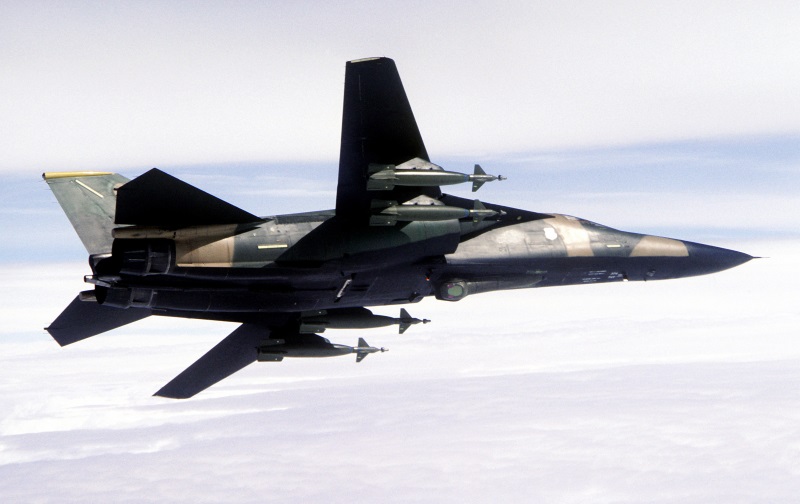- Yes, both would be great
- Yes, but just add the Late version when War Thunder is ready for it
- No


In Game Brief
The F-111C is the Australian export version of the Aardvark. I am suggesting two versions of the aircraft to be added, an Early and a Late version as the upgrades received during its lifetime were so substantial that is almost constitutes an entirely different model. At release, it was basically an A model with the larger wingspan from a FB-111 and stronger landing gear for increased payload and fuel capacity.
It also came to my attention when the F-111A was announced, and all the excited Aussies were stating their hopes for the C model (the F-111 is basically a national icon down under), that there was some confusion about its capabilities, and that the C would be too much of a leap over the A to add yet. I often saw comparisons to the F-111F. I think this stems from two ideas, one being that the Wkipedia page actually lists the wrong engine for an F-111C, the TF30-P-100 with 25,100 lbf afterburning thrust as found in the F-111F. The F-111C was actually originally built with the TF30-P-3, the same engine as found in the F-111A. Later in life they received an upgrade to a TF30-P-109 engine with 20,840lbf afterburning thrust.
The other is that the F-111C when introduced did not have any of its later, advanced weaponry. At release the weapons options were very similar to that of the A with dumb bombs and Aim-9Bs. Later in life, it received the ability to use Paveway II laser guided bombs, Harpoon anti ship missiles, GBU-15 bombs, AGM-142 Popeyes and upgrades to Aim-9M sidewinders. Even the camo was different, going from two tone green/brown to the grey as seen above.
History
Spoiler
In 1963 the Australian government went looking for a replacement for their obsolete Canberra bombers. After evaluation options from France, UK and USA. Despite the F-111 still being in development, it was chosen as the winner with plans to draw out the Canberra’s service until it was ready. While the first delivery officially occurred in 1968, the grounding of the F-111 fleet in USA prevented the C from actually entering service until 1973. During that 5yr time span Australia was provided F-4Es to fill the capability as a stop gap. In the mid 1980s the F-111Cs were outfitted to carry AN/AVQ-26 Pave Tack laser targeting pods within the weapons bay (rotated in and out when not in use), and by the mid-late 1990s they received major avionics upgrades that included twin mission computers, modern digital databus, digital weapon management system, new AN/APQ-171 terrain-following radar, new AN/APQ-169 attack radar, and twin ring-laser gyro INS. As well as support for the AGM-142 and an engine upgrade to the TF30-P-109.
Specifications F-111C general
Spoiler
- Crew: 2 (pilot and weapons system operator)
- Length: 73 ft 6 in (22.4 m)
- Wingspan: 70 ft 0 in (21.33 m)
- Swept wingspan: 33 ft 11 in (10.35 m) swept
- Height: 17 ft 2 in (5.22 m)
- Wing area: 657.4 sq ft (61.07 m2) spread, 525 sq ft (48.8 m2) swept
- Empty weight: 47,179 lb (21,400 kg)
- Gross weight: 89,397 lb (40,550 kg)
- Max takeoff weight: 110,002 lb (49,896 kg)
- Top Speed: Mach 2.4, Mach 1.2-1.3 at sea level
- Weapons: 1× M61 Vulcan 20 mm with 2,050 rounds (mounted in weapons bay), Mark 82 and Mark 84 general purpose bombs
- Hardpoints: 9 in total (8× under-wing, 1× underfuselage between engines) with a capacity of 31,500 lb (14,288 kg) ordnance mounted externally on hardpoints and internally in fuselage weapons bay
Specifications F-111C Early
Spoiler
- Powerplant: 2 × Pratt & Whitney TF30-P-103, 9,800 lbf thurst dry, 18,500 lbf with afterburner
- Weapons: Aim-9B Sidewinder, plus as with F-111C general specs above
Specifications F-111C Late
Spoiler
- Powerplant: 2 × Pratt & Whitney TF30-P-109 with 20,840lbf thrust with afterburner
- Weapons: As with F-111C general specs above plus, Aim-9M Sidewinder, AGM-142 Popeye, AGM-84 Harpoon, Paveway II laser-guided bombs, GBU-15 glide bombs.
Sources


